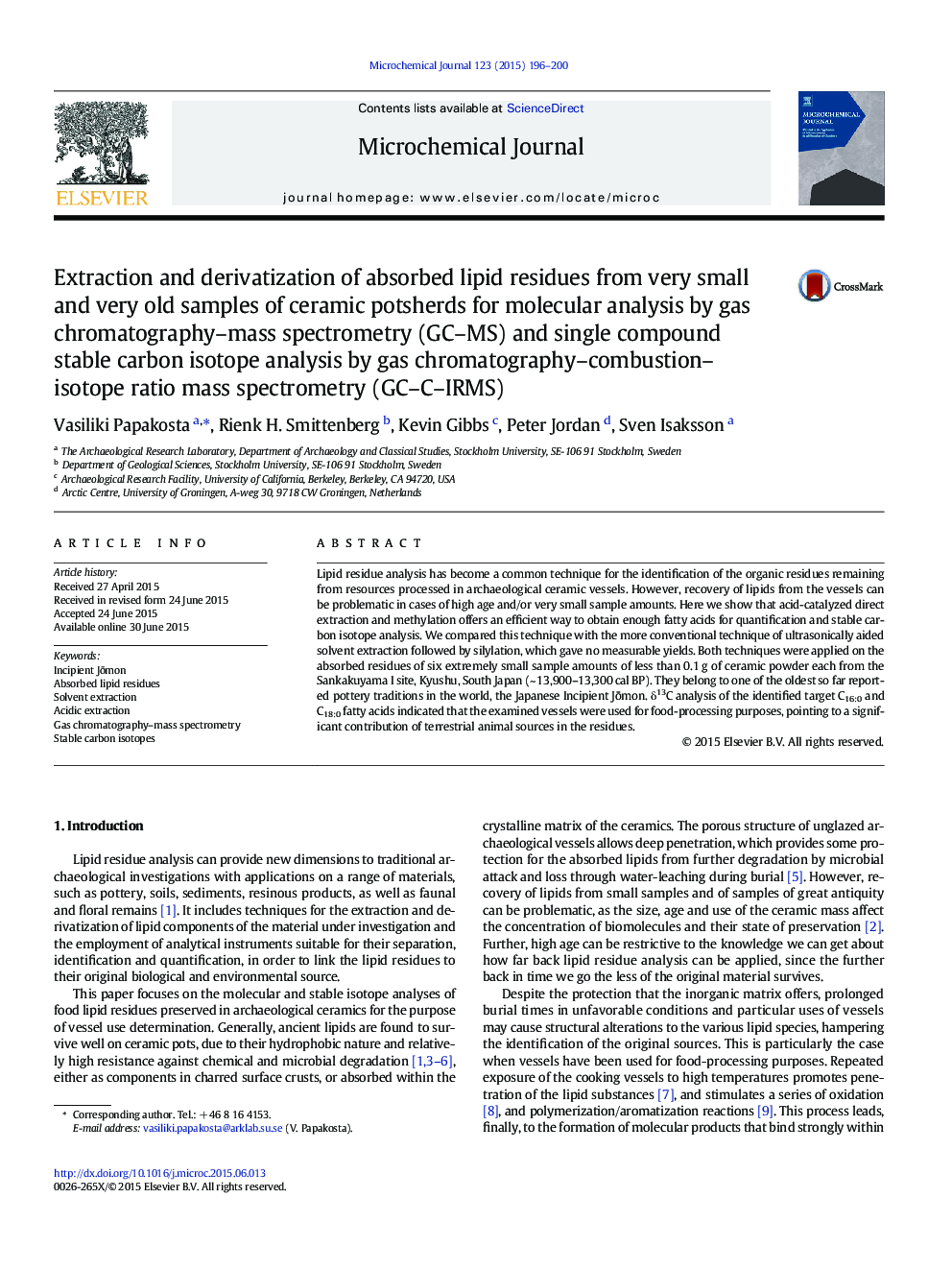| Article ID | Journal | Published Year | Pages | File Type |
|---|---|---|---|---|
| 1227658 | Microchemical Journal | 2015 | 5 Pages |
•We tested the lipid recovery potentials of one of the oldest pottery sequences.•The sample amounts were about 20 times smaller than what is recommended.•The use of a standard solvent extraction resulted in no measurable yields.•A one-step acidic extraction and methylation technique released enough fatty acids.•We managed to get molecular and single-compound stable carbon isotope information.
Lipid residue analysis has become a common technique for the identification of the organic residues remaining from resources processed in archaeological ceramic vessels. However, recovery of lipids from the vessels can be problematic in cases of high age and/or very small sample amounts. Here we show that acid-catalyzed direct extraction and methylation offers an efficient way to obtain enough fatty acids for quantification and stable carbon isotope analysis. We compared this technique with the more conventional technique of ultrasonically aided solvent extraction followed by silylation, which gave no measurable yields. Both techniques were applied on the absorbed residues of six extremely small sample amounts of less than 0.1 g of ceramic powder each from the Sankakuyama I site, Kyushu, South Japan (~ 13,900–13,300 cal BP). They belong to one of the oldest so far reported pottery traditions in the world, the Japanese Incipient Jōmon. δ13C analysis of the identified target C16:0 and C18:0 fatty acids indicated that the examined vessels were used for food-processing purposes, pointing to a significant contribution of terrestrial animal sources in the residues.
